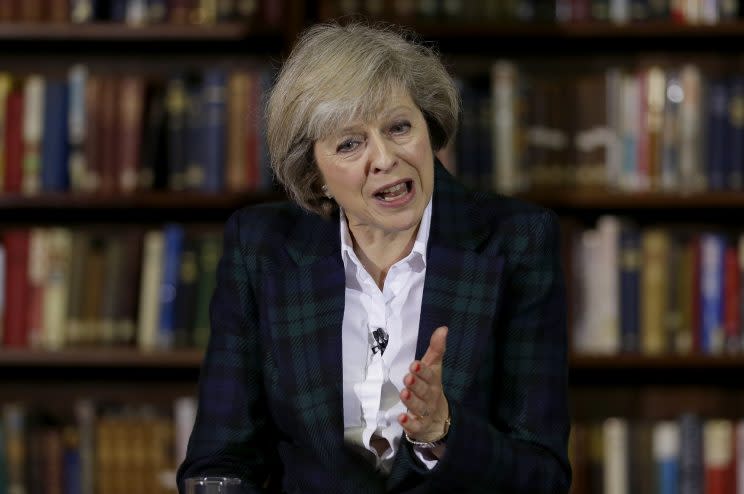What you need to know about Theresa May, the United Kingdom’s next prime minister

In the wake of Brexit, the United Kingdom’s collective vote on a nonbinding referendum to leave the EU, Prime Minister David Cameron announced that he would resign by October. Now, with Theresa May as the last candidate remaining, Cameron announced on Monday morning that he would step down by Wednesday.
May’s final competitor, Andrea Leadsom, dropped out of the race for prime minister Monday morning, solidifying May’s impending election. She is expected to become Britain’s leader on Wednesday.
May has served as Britain’s home secretary for six years, the longest anyone has held this position in the last 50 years. She is often likened to German Chancellor Angela Merkel in terms of temperament and work ethic, and her tenure has been marked by strict immigration policies and a lack of major domestic terrorist attacks.
May launched her campaign with an op-ed in the Times of London that says the U.K. “needs strong, proven leadership” that could “unite [the] party and [the] country.” In the sovereign state’s history, only four women have held any of the highest-ranking positions — prime minister, foreign secretary, chancellor and home secretary — with May being one of them.
May has been the Tory frontrunner since June 30 when Boris Johnson, a leader of the campaign to leave the EU and a favorite to replace Cameron, announced that he had withdrawn from the running.
“Having consulted colleagues and in view of the circumstances in Parliament, I have concluded that that person cannot be me,” the Conservative MP and former London mayor said in a speech.
Before Johnson’s withdrawal from the race, Betfair named May the favorite to be Cameron’s successor with 11/8 odds. With Johnson, her fiercest competitor, withdrawn from the race, May seems poised to secure the nomination and election.
May’s time in office has not been without controversy. In early 2014, she received backlash for supporting the detention of journalist Glenn Greenwald’s partner, David Miranda, at Heathrow Airport under the Terrorism Act. May was also responsible for severe delays in the processing of passport applications during the summer of 2014. In November, she unveiled the contentious investigatory powers bill, which would give British security agencies increased digital surveillance capability.
On June 23, the United Kingdom held a referendum on whether the country should cut ties with the European Union. The “leave” option won with 52 percent — a decision many thought impossible despite the close polling in the days prior to voting.
May was a “remain” supporter, which sets her apart from the other Conservative candidates — out of five frontrunners, she is the sole supporter of European unity — but she would appoint a pro-Brexit minister to handle the negotiations. Cameron, who favored remaining but called for the referendum to appease members of his party, has expressed his displeasure with the results of the referendum.
Among May’s top competitors were Justice Secretary Michael Gove, Energy Secretary Amber Rudd, Defense Minister Liam Fox and Energy Minister Andrea Leadsom. The deadline for candidates to enter their bids for the leadership race was Thursday, June 30, with a potential candidate needing a written nomination from two Conservative MPs to appear on the ballot.
If there is only one valid candidate, that person will be declared the elected Conservative Party leader and prime minister. If there are two valid candidates, their names will be put on the ballot for a grass-roots Conservative Party vote. If there are more than two valid candidates, the MPs will vote on the ballot on July 5 to identify the top two candidates prior to the grass-roots vote.
This kind of voting procedure aims to ensure that there will only be two candidates on the postal ballot when it is sent to registered Conservative Party members. To be eligible to vote, one must have been a member of the Conservative Party for at least three months prior to the close of the grass-roots ballot. This kind of “one member, one vote” system will be utilized by the Conservative Party’s estimated 150,000 eligible members.
Following this model, since May is the only candidate left in the race, she will be declared prime minister.
This story has been updated from a version published on June 30, 2016.

